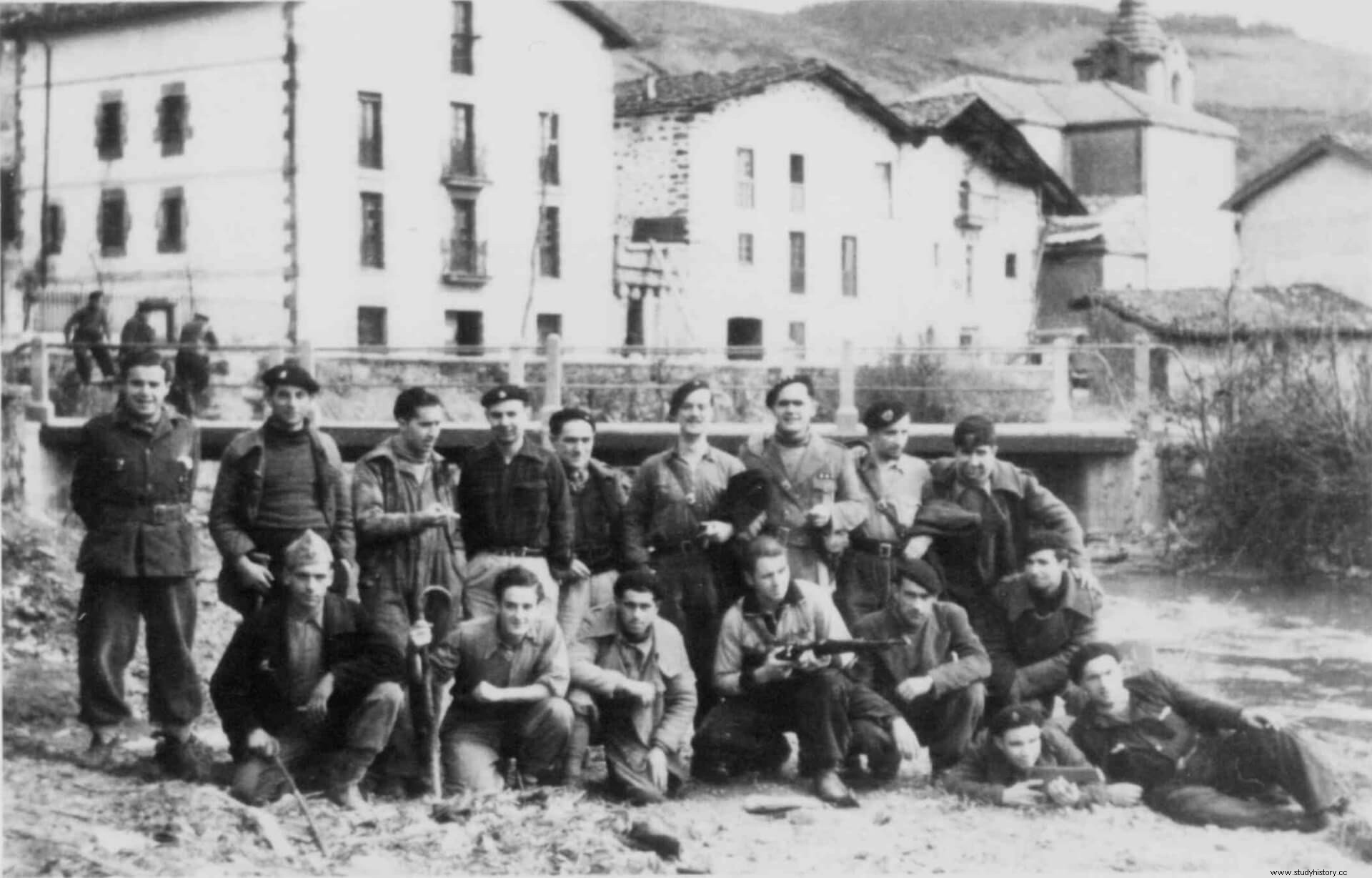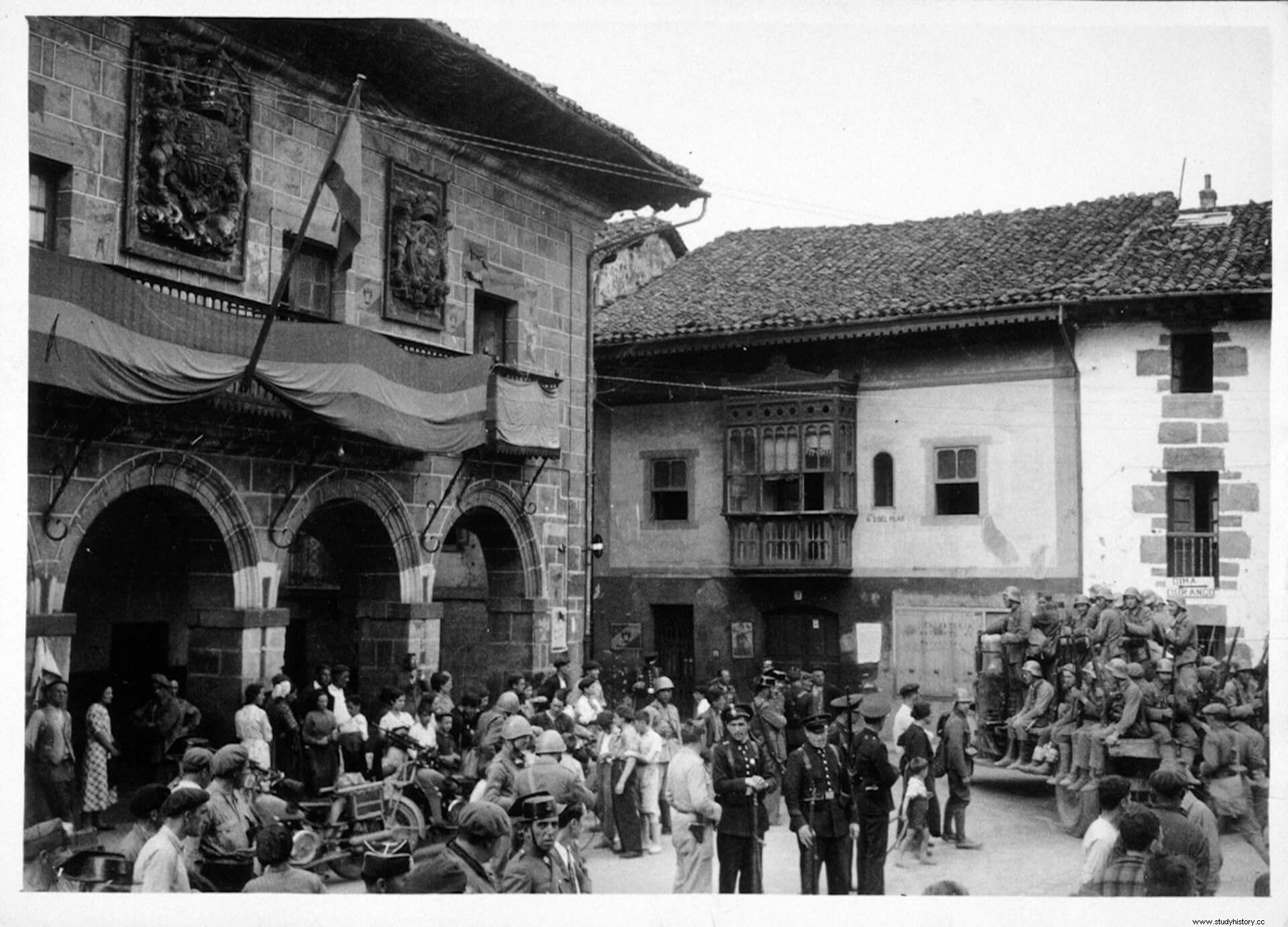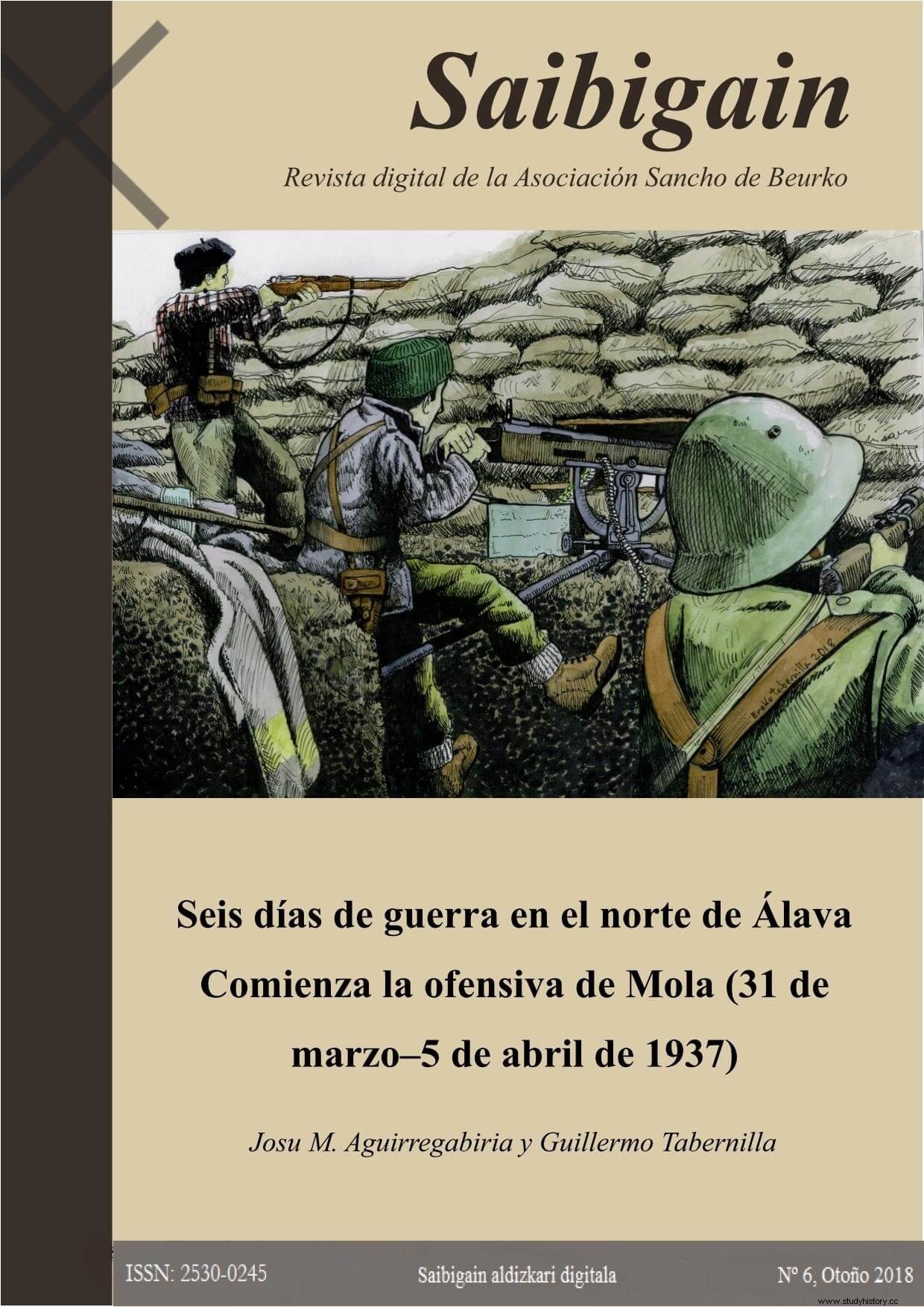With this suggestive title the Sancho de Beurko Association collects in the latest issue of its digital magazine Saibigain the most complete study carried out to date on the Mola offensive and the breakup of the Basque front with regard to the first week of fighting that began on Wednesday, March 31, 1937 and led to the Basque Army, after a six-day battle, to the line of the ports of Barazar, Dima (Zumeltza) and Urkiola, cutting short the lives of many young people, hundreds of whom continue in mountains such as Albertia, Maroto, Jarindo and others that surround Otxandio and Ubidea without their families really knowing what happened to them and to whom this work tries to name or, when this has not been possible, establish a hypothesis of what their fate may have been, sometimes going down to the company and section level. The authors, Josu Aguirregabiria and Guillermo Tabernilla, in the same vein as previous issues of this publication, offer in a digital format free of download (much appreciated), the result of a conscientious historiographical research work that provides important novelties. 
The operations have been described at a level of detail unpublished, which includes all the battalions involved; a scale that both Martínez Bande and other authors did not reach. To obtain such a result, the authors have relied on all kinds of sources (documentaries, bibliographies, newspaper reports, etc.) and even testimonies, such as the interview with Manuel Gárate, corporal of the 5th Flandes Battalion, who was precisely at the known by Franco's troops as “Red Triangle” , formed by the mountains Albertia, Maroto and Jarindo. His account of the combat fought on the Albertia is illustrative of the fight in the mountains that would characterize the entire Basque campaign until reaching Bilbao and preludes the harshness of a long three-month battle not yet sufficiently investigated by historiography:
Mola's offensive on Vizcaya
The context in which the operations took place takes us to the spring of 1937. After the failure of the great offensive of the Republican Army of the North towards Vitoria-Miranda de Ebro in November -December 1936 (an operation framed in the first major offensive of the Republican Army of the North, which sought to relieve the grip hanging over Madrid), the Asturian, Santander and Basque fronts stabilized during the winter and both sides prepared to fortify their respective lines, especially the government. At the same time, the operations of the rebels on the Madrid and Guadalajara fronts had suffered an identical stagnation, for which reason the General Staff of General Franco It was decided to take the initiative again, planning a major operation on a single front, concentrating all available means on a single objective, while leaving the capture of Madrid in the background. The new objective chosen would be the occupation of the province of Vizcaya as a preliminary step to the elimination of the entire northern front, much weaker than the rest due to its isolation, regional cantonalism and the ineffectiveness of the International Brigades. Opposite they would meet a chief of staff and minister of war, Largo Caballero , whose situation was greatly weakened by pressure from the Soviets, who would end up skimping on the planes that the north needed so much.
For his part, the General Llano de la Encomienda , head of the Republican Army of the North, did not have the support of the Basque authorities, under the command of Lehendakari José Antonio Aguirre, and his action, which bordered on ineffectiveness, was limited to arranging for the transfer to Vizcaya of the few available planes ( a squadron of 8 "flats") and the troops of the Regiment of Cars of the North, who had to make a long trip from Asturias, where they operated in the offensive on Oviedo and its corridor, practically paralyzed at that point.

In these circumstances, General Mola, with close of 43,000 men and another 18,000 in the training phase, was able to concentrate two masses of artillery proper (for the first time in the Spanish Civil War), adding a total of 130 cannons and howitzers of all calibers, and 150 combat aircraft at aerodromes in Lasarte, Vitoria, Burgos and Soria. His opponent, the Basque Army, had a similar maneuvering mass in terms of troops, but only had about 10,000 men and 18 pieces of artillery deployed on the narrow front attacked, most of them small caliber.
The surprise effect was not such, since both the Government of Euzkadi and the central one handled information that pointed to the imminence of the Mola offensive, but its intensity would be. Three brigades from Navarra, 1st, 3rd and 4th (the 2nd remained in reserve), under the command of General Solchaga, would carry the weight of the operations, although the leadership would correspond to Colonel Camilo Alonso Vega , in command of the 4th Brigade, an Africanist who had the highest level of trust from General Mola himself, head of the Army of the North.
But this offensive would be known for marking the beginning of the use of aviation as a direct support weapon under German direction, with special prominence for the chief of staff of the Condor Legion , Manfred von Richthofen, who would maintain a tense tug-of-war with his Spanish allies, coming to stage a serious disagreement with Mola by reproaching him for the slow progress that would have its explanation in the serious resistance put up by the Basque Army and in the logical errors of coordination with the units that operated in the vanguard.
The work methodology
Aguirregabiria and Tabernilla's work is divided into three main sections:an extensive introduction, followed by a detailed exposition of all the documentation consulted by the authors (including specific sections on armored vehicles and aviation) and ends with the details of day-to-day operations, with a total of 92 images and illustrations, made expressly for this work, by Eneko Tabernilla.

But if something defines this work it is the microhistory , the desire to know the interiority of the details, whether they come from personal and/or family history as part of a puzzle in which each piece counts; In the words of Pedro J. Oiarzabal:
And it begins with a prologue that leaves no one indifferent, being very significant of the moment of maturity that the project of the Sancho de Beurko Association is experiencing, which has just presented us with the book on the Basques in the Second World War that condenses the four years of the Fighting Basques Project and that has been edited by Desperta Ferro Ediciones. A maturity that allows these authors to address complex issues directly related to memory in a new and courageous way, always from the absolute independence and absence of sectarianism, while the embers of the work on the myth of the Basque Code are still hot. talkers of Oiarzabal and Tabernilla (the myth of the use of Basque in the battle of Guadalcanal) that has caused so much talk since its publication in the pages of Saibigain in the spring of 2017.
